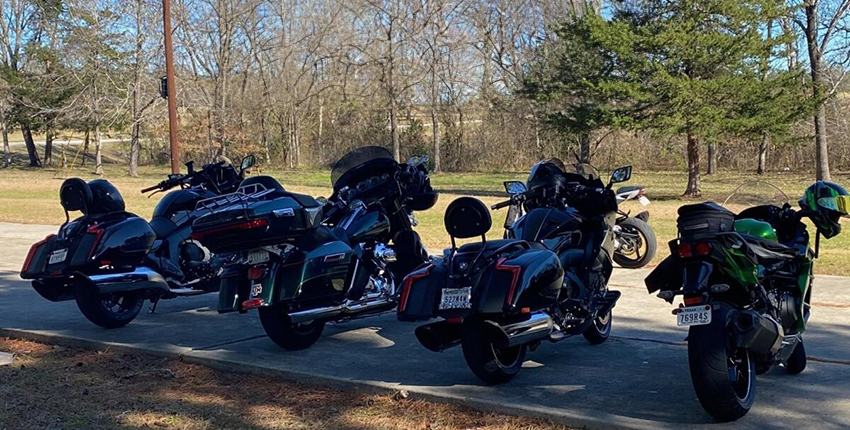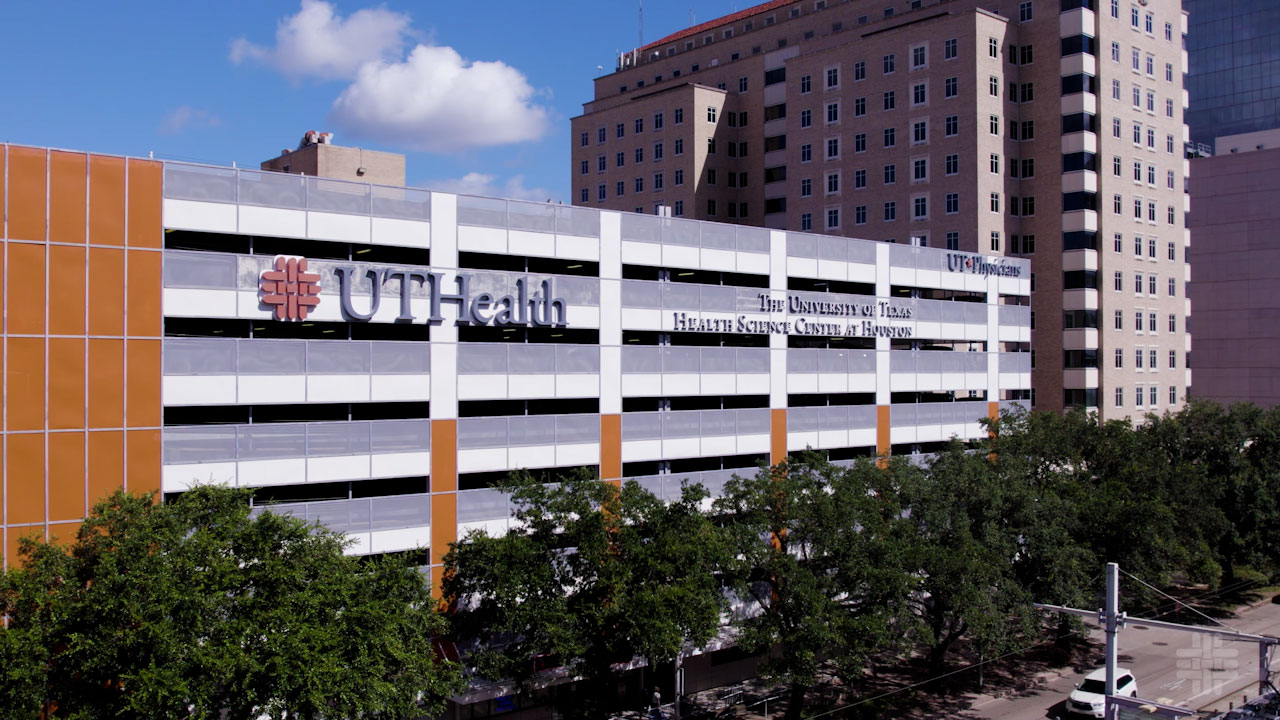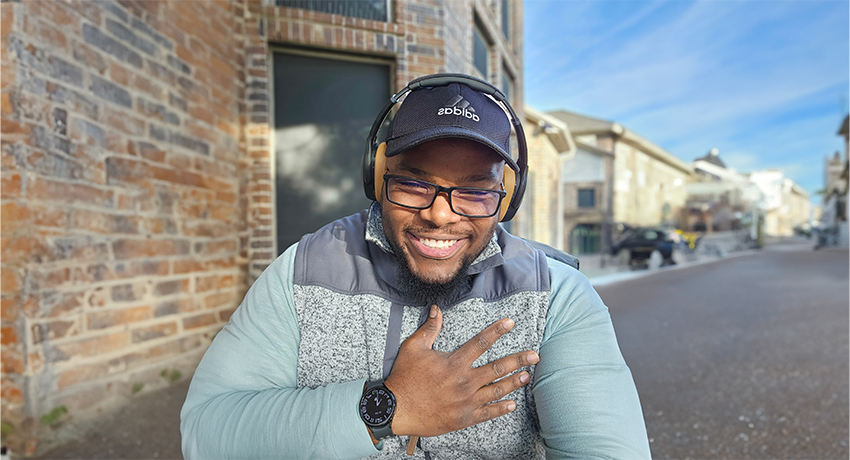A neighbor invited Johnny Brinson to ride the backroads in Montgomery County, Texas, on New Year’s Eve in 2022. Perched on his new motorcycle, the day of fun quickly turned into a dramatic rescue and a year of recovery.
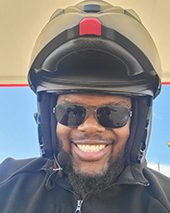
After Johnny accelerated to pass a car on the two-lane road, his approach on a corner was a little too fast, and he leaned tight. A tanker approaching from the opposite lane avoided him, but he hit another motorcycle, tumbled, and landed in the fields. His bike caused a brush fire. Johnny tried lifting his right leg, and the bottom half stayed on the ground. All he saw was his femur protruding through his skin.
“I didn’t realize I was losing so much blood,” Johnny said. “The state troopers and Montgomery County EMS were swift when they answered the call. It’s like they were waiting for it to happen. It was a miracle they came so quickly.”
With his helmet still on his head, Johnny used the helmet communication system to stay on the phone with his wife while he was rushed by ambulance to a hospital.
Learning the state of injuries
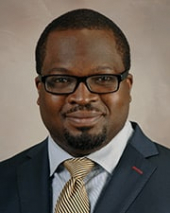
Johnny initially received care at a regional hospital, but because his injuries were so extensive, the trauma director contacted Jide Tinubu, MD, an orthopedic trauma surgeon at UT Physicians, and asked to transfer Johnny to a hospital in The Woodlands.
Tinubu assessed Johnny’s injuries: a severe open femur fracture and patella fracture, as well as injuries to his right upper extremity. Johnny needed surgery.
Tinubu described Johnny’s injuries as potentially life-changing. Even with treatment, he could end up having difficulty walking long-term, have chronic pain, or even lose his leg. Sharing this type of news can be difficult, but Tinubu said he combines frankness and compassion for the patient.
“I was able to have a frank conversation that his injury was really bad, but I would do my best to provide the best care that I could,” said Tinubu, assistant professor in orthopedic surgery at McGovern Medical School at UTHealth Houston.
Johnny said Tinubu’s confidence was comforting.
“He told me it would be a long road to recovery, but they would take good care of me,” Johnny said. “He was very hands-on, and I love that.”
A path to healing
Johnny had five surgeries in one week. An early surgery involved adjusting pins on the external fixator that had been attached to the bone of his injured leg to keep the fractured bone stabilized, aligned, and the leg at the appropriate length. His open fracture, meaning the broken bone pierced his skin, required antibiotics to decrease the risk of infection. Tinubu later repaired the femur with a combination of screws and a rod. It was a challenging case.
“His joint surface was broken into many pieces, and it was difficult to reconstruct that, put it back together, and secure it in such a way that it doesn’t interfere with long-term function,” Tinubu said. “And then everything had to be properly aligned so his leg would be the same length, the appropriate rotation, and held in place until the body could heal.”
Jumping into outpatient rehabilitation
Johnny opted for outpatient physical therapy rather than inpatient rehabilitation. His kids had never been away from him, and he wanted to continue his presence at home.
“I was just so determined and motivated. I don’t like to feel helpless,” Johnny said. “I kept pushing myself even through the pain.”
What we do as surgeons and therapists is impactful, but success depends on the patient—their mindset and their approach to recovery.
– Jide Tinubu, MD, orthopedic trauma surgeon
Part of his pain involved forcing his knee to bend. In June 2023, about five months after his surgeries, Tinubu did a manipulation under anesthesia (MUA), a noninvasive procedure that forced Johnny’s knee to bend and break through the scar tissue. Johnny couldn’t believe the resulting pain despite there being no incisions. He felt that he lost months of progress after the procedure but continued to push through and work toward mobility. After several months of physical therapy, Johnny was ready and able to go back to the gym.
Final results
Tinubu accomplished everything he needed to get Johnny as close to 100% as possible. Given the severity of his original injury, Tinubu was happy with the results. Johnny walked with a mild limp at his one-year post-op appointment, but without any assistive devices.
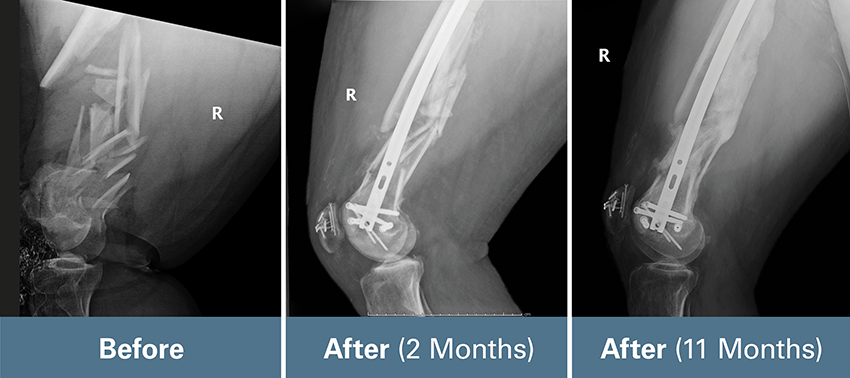
“I’m pretty much back to my normal day-to-day activities, where I go to the gym, do my car projects in the garage — building engines and such — and am still very active,” he said. “I like to keep myself moving.”
Tinubu said therapy was extremely important in Johnny’s recovery process, as well as his strong support network. It’s about 50-50 in terms of doing the surgery and then therapy, Tinubu said. You can’t do one without the other.
“Johnny would not be where he is without doing the physical therapy,” Tinubu said. “He was highly motivated to get better and do everything he needed to, and that makes all the difference in the trauma situation.”
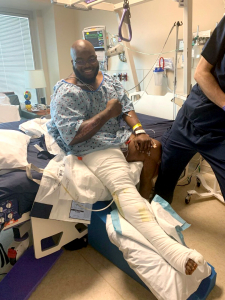
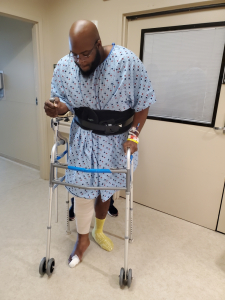
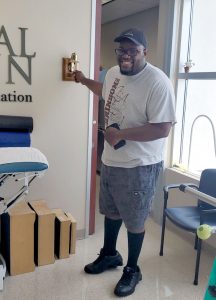
Faith in action
Johnny still gets a case of post-traumatic stress when thinking about the accident and the moments that followed. Many of his motorcycle accident-related experiences were beyond explanation. He can only tie them to God; he saw faith in action.
“I was at the lowest point in my life and didn’t know if I was going to live,” Johnny said. “Sometimes you don’t know where in your life you will experience God. That day, that month, I experienced so much. It changed the way I think and the decisions I make. It really did change me. It was a scary moment that I endured with amazing care by my surgeon, the trauma team, and other physicians.”
Johnny loved riding his motorcycle through the Colorado mountains when he lived in Denver years ago. He described the scenery as breathtaking. His motorcycle days are over, but that’s a memory he will always keep.
